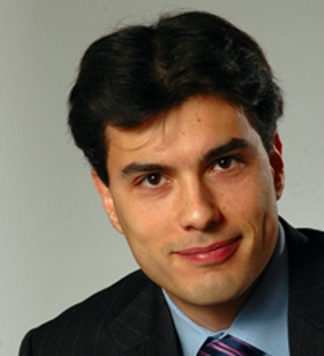UC Berkeley professor: Traffic tie-ups are tied to your neighborhood
Allie Johnson
Traffic jams fray nerves, make employees late for work and even cause wrecks. A new study gives some insight into how to reduce this congestion.
Research by engineers from the University of California, Berkeley, and the Massachusetts Institute of Technology found that drivers from certain neighborhoods contribute disproportionately to traffic snarls. And asking just 1 percent of drivers from these neighborhoods to delay or cancel their trips would reduce traffic-related delays for other drivers by 15 percent more than by asking 1 percent of all drivers to change their travel plans.
 InsuranceQuotes.com talked with study co-author Alexandre Bayen, an associate professor of engineering and computer science at UC Berkeley, to learn more.
InsuranceQuotes.com talked with study co-author Alexandre Bayen, an associate professor of engineering and computer science at UC Berkeley, to learn more.
This is the first large-scale traffic study to use GPS and cellphone signals from anonymous drivers rather than using data from the U.S. Census. Why is this important?
Census data is static and also very incomplete and sometimes inaccurate because it doesn’t aggregate all the factors we looked at in the study, which include traffic routes, traffic volume and speed. By using cellphone tower information, you can (better understand traffic flow).
Why did you study traffic patterns in Boston and San Francisco?
Beyond (the fact that the study was done at MIT and UC Berkeley), Boston has severe congestion problems and the Bay Area (traffic) is absolutely crazy because of Silicon Valley, among other things, so these were extremely good locations.
In these cities, you found that drivers from certain neighborhoods contributed more to traffic congestion than other drivers. Would that be the case in any city?
Yes, you’d find that in any city. But the way in which some neighborhoods would contribute more would be different from city to city. For example, Boston has a very circular network – you can see the arterials and freeways going across the city. The Bay Area has four main bridges and several sets of freeways, such as 101, 580, 880 and so on. So these create different features of congestion.
Why do drivers from certain neighborhoods contribute more to traffic jams than others?
In a transportation network, there are several known bottlenecks causing a lot of congestion. The fact that some neighborhoods contribute more to congestion is mostly associated with the fact that they have more drivers that have to use the bottleneck, and it’s mostly commuter-related. For example, in the 101 corridor (in the Bay Area) you have a lot of northbound and southbound traffic, which is due to economic activity in Silicon Valley.
So, congestion happens when many drivers from a certain area are using the same roads all at once?
Exactly. It’s like when you go to Candlestick Park, the (San Francisco) 49ers’ stadium. If 50,000 people go to the stadium for a game at the same time, then clearly the neighborhood around the stadium, and most likely the major freeways leading to that stadium, will be congested.
Why are traffic tie-ups such a problem? What negative effects do they have?
First, there are environmental concerns: If you’re not going the optimal speed or if you’re stuck in traffic, that (increases automotive) emissions. Second, congestion causes economic loss due to delay – people are late to meetings or don’t make it to events. Third, a significant amount of accidents are due to stop-and-go traffic (caused by congestion).
What are some of the ways government officials are dealing with traffic congestion now?
One of the most common methods is called ramp metering, where traffic lights can prevent cars from entering the freeway to delay congestion. There’s another possibility that’s used frequently in the Bay Area, which is that you can have a sign saying there’s congestion on a certain freeway, so please use 280 instead of 101.
There are a lot of other ways that public agencies are trying to deal with congestion, some of which are more proactive. For example, some companies give subsidies to employees to use public transportation. In some places, there are mandates to force big employers to organize their own traffic. Google has its own shuttle service; it has more than 140 vehicles.
